This flower is one of the most popular fauna representatives in private gardens. Echinacea not only has a stunningly beautiful view, but also has excellent medicinal properties. Its inflorescences are used to prepare various tinctures that are used in cosmetic and pharmaceutical purposes. This plant will be useful for gardeners. It is one and the best honeymows, therefore it is capable of attracting a large number of pollinators in the garden.
Types of Echinacea
Echinacea flowers have 9 main species that are beautiful in their own way and can bring a variety for each flowerub. The inflorescences of each of the species are distinguished by the color gamut and the size of the bud.
- Echinacea is strange. This type of flower is the only one of its kind has a bright yellow inflorescence. Along with Echinacea Purple, this species is the most popular among gardeners.
- Echinacea purple. Growing from seeds of this species is rare. It differs from other varieties of the flower with a rather large bud, the diameter of which reaches 12 cm. Purple petals are crowned with a large brown core, dome-shaped form. In the wild, a purple echinacea grows mainly on the stone hills, forests and wastelands with predominantly lime soils. An interesting color will be able to create a feeling of coolness and freshness in the garden.
- Cranberry Cupcake is one of the most interesting Flowers of Echinacea. Small gentle-purple petals framed a massive and lush core consisting of hundreds of small tongues. The effect of flowering of this type of Echinacea makes it a wonderful choice for decorating flower beds in the garden.
- The King variety. Royal this variety called not in vain. The height of the plants of this type of Echinacea reaches 2 meters. However, this variety has deserved its popularity by no means a length of the stem, but large beautiful flowers. Red-pink gentle inflorescence with small petals and a massive core reaches 15 cm in diameter.
- Sort WHITE SWAN, the translation of the name of which means "White Swan", very similar to the daisy flower. These flowers have a bright white color, which looks very impressive on the household plot.
- Indiaca. The variety of a flower, which is distinguished by interesting long petals of a wide range of colors: from gently pink color to light brown.
- Magnus is one of the most beautiful varieties of Echinacea. With a relatively small height of the flower, up to 1 m, it is distinguished by a very beautiful bud with a gentle pink color of petals and a light brown core. Magnus blooms from mid-July to the end of September, pleaseing the owners of the household site with its beauty.
Echinacea: Growing
This plant planted both sedate and seeds, while getting very good results. Vegetative reproduction lies in the division of the bush of the plant and in the landing of two, or more parts in the soil. Echinacea has a rather powerful root system, and therefore it is perfectly transfers such a method of transplant. At the same time, the roots of the plant during vegetative reproduction are deeply penetrated into the ground, which favorably affects the growth of the flower growth. The planting of the bushes of the plant obtained by division can be made both in the spring and autumn.
The first planting of the flower on the household plot is most often produced by seeds. Those who are going to breed a plant in this way, it is necessary to remember the features of the plant's development. The fact is that the seeds of this flower germinate for a long time. The first shoots after sowing sometimes you have to wait more than a month. The seeds of the plant in greenhouse conditions are most often sown at a constant temperature and humidity, so that it is planted to plant prepared seedlings. In this case, the flowers at the time of landing are ready for harsh environmental conditions. If plant seeds fall at the end of February - early March, the chance to see the flowering of Echinacea in the current year increase repeatedly.
Some gardeners sow seeds directly to the garden. However, this method can slow down the growth of the plant, as well as increase the likelihood of his death. At the same time, the flowers grow weakly, often with a degraded root system, flowering does not differ in large buds with bright colored petals. That is why it is extremely rare to such a seed planting.
Before planting seeds of Echinacea, regardless of whether they are put into open soil or in specially prepared dishes, they must be treated with special solutions. They contain substances that stimulate the growth of plants, as well as are able to protect it from diseases. Seeds are seeded in a specially prepared and slightly moistened substrate for flower plants (it can be bought in any flower shop). The seed is placed on the depth of no more than 0.5 cm. At the same time, it is not necessary to immediately sprinkle the seeds of the earth. They are covered with a small (up to 1 mm) layer of purified sand. From above, they are slightly moistened with a spray gun. The most optimal temperature for seed growth in greenhouse conditions is + 14 ° C.
Echinacea seedlings are produced in the middle-end of May, when the probability of frosts is very low. For the landing, they choose a well-lit place, because this plant does not like shady, low-solar sites. When planting the plant, special attention should be paid to the soil structure on the site. The fact is that Echinacea does not like soils with high humidity too much, but at the same time it suffers from drought. Therefore, the site on which the plant landing is planned must be balanced wet or have an irrigation system.
The correct selection of the soil and its processing are the key to an excellent result in the cultivation of the plant. The fertilizer of the soil is carried out by organic substances, mineral fertilizers can not be used. At the same time, the soil on the plot should have a normal level of acidity. At high indicators, lime contribute to the soil.
Although Echinacea is considered a thermo-loving plant, adults are very well tolerated winter frosts under the snow cover. Cereal flower bushes can be covered with deciduous cover.
Echinacea: care
Echinacea is a rather unpretentious plant that does not require special additional care. The flower quite successfully copes with the problems of diseases and major pests. The plant perfectly adapts to changeable conditions, such as frost, rain, drought or depleted soil.
Care rules:
- Like many floral cultures, Echinacea needs to protect the weeds. Greeting flower beds with these flowers will improve their flowering and plant growth process.
- The second important point in the care of this amazing plant is optimal moisturizing and tillage. The application of fertilizers at rich soils is carried out no more than once in the season. For this, the organic mixtures are best suitable. They can be made independently, but it is better to buy a balanced mixture in a specialized store.
- If the soil is not replete with mineral substances, in the spring you can make mineral potash-phosphoric or nitrogen fertilizers.
- Flood plants must be cut. Do it, cutting the stem at a distance of no more than 20 cm from the ground. Otherwise, flowering plants will slow down.
- This plant is growing successfully in one place for no more than 4-5 years, after which it must be divided into several parts and sear.
- Although Echinacea and tolerate the winter, it is better to prepare a plant to her offensive. All stems and leaves are trimmed on the base of the bush, the bush is dipped and the mulch is sweeping. Weak plants can be additionally covered with trees with leaves.
Collection of seeds for breeding
It is believed that only ordinary echinacea varieties are well multiplied by seeds, and the velvet species are fashionable to grow only from the parent plant. This is a bit wrong. As well as ordinary varieties, velvet quite multiply seeds, but they give a full flower only in the first generation.
To assemble the seeds of the plant, you need to select a well-formed head and cut it together with the stem. Next, the flower is suspended for the stem, and the inflorescence itself is covered in a paper or polyethylene sachet. In the process of drying the bud, the seeds will fall into the bag. Then they are collected and additionally dried on paper for 15-20 days, after which they are placed in a glass jar and put in a refrigerator, where they can be stored for 1 year before the landing.
Diseases and pests Echinacea
Due to the fact that Echinacea itself is a rather steady plant to various kinds of diseases, flower diseases can only develop due to improper care.
The main error of gardeners during the cultivation of Echinacea is irregular and unbalanced watering. Increased moisture content of the soil can cause the plant damage to viral diseases caused by the spores of the mushrooms of the churchpore and the seppe. With this disease, the appearance of spots is observed on the surface of the Echinacea leaves. The disease leads to a weakening of the flowering of a plant or even to his death.
Also, the oversupply of moisture can cause the appearance of malical dew on the leaves of the plant or to attract insect pests. It is necessary to fight diseases and pests if possible reducing soil moisture, removing infected plants and introducing the necessary additives, among which insecticides. The most dangerous pests for this plant are slumping Pennica, bugs and slugs.

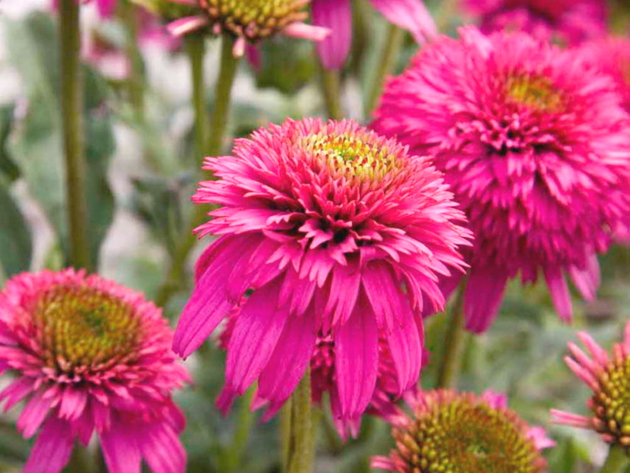
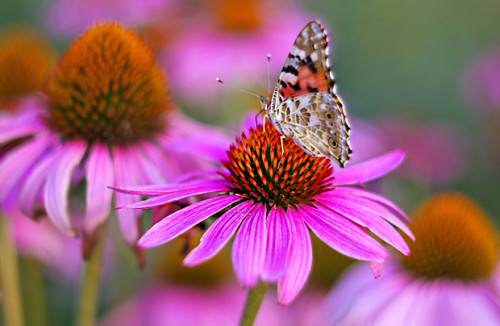
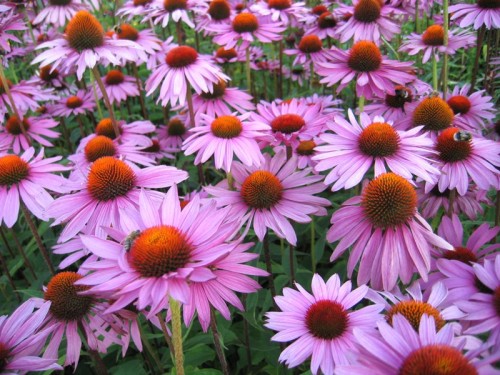
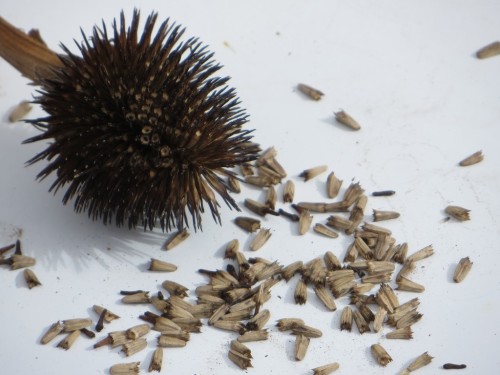

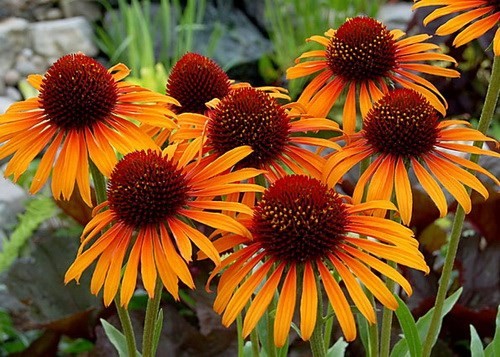
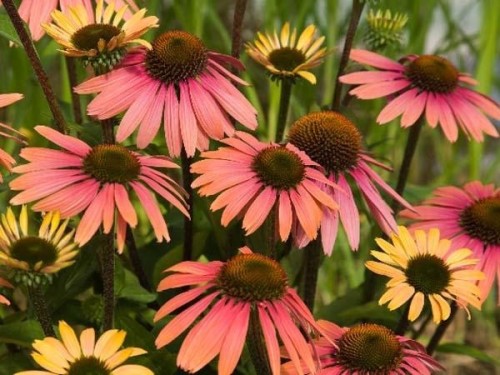
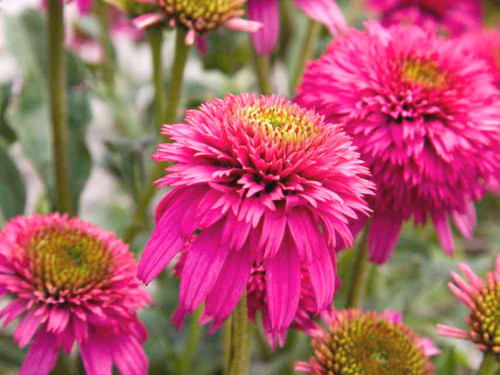
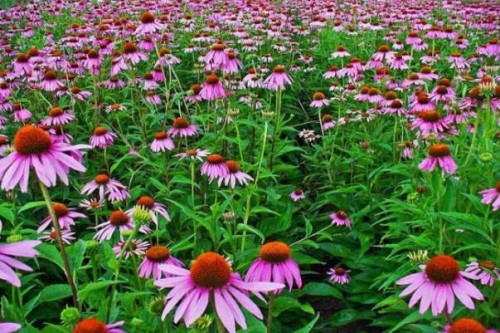
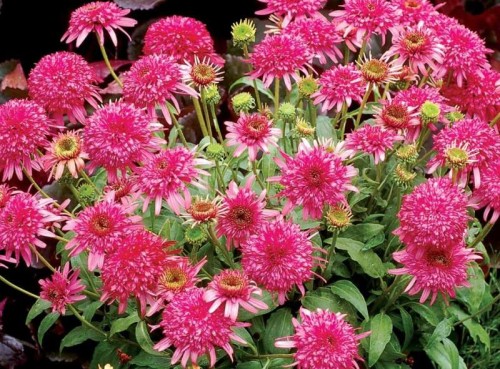
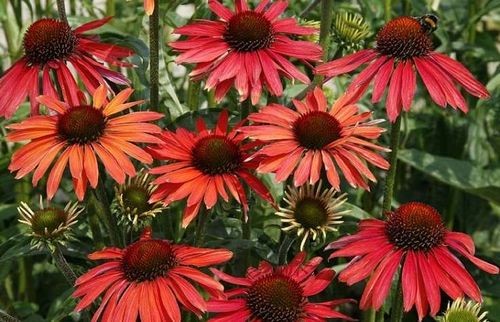












 Start a discussion ...
Start a discussion ...